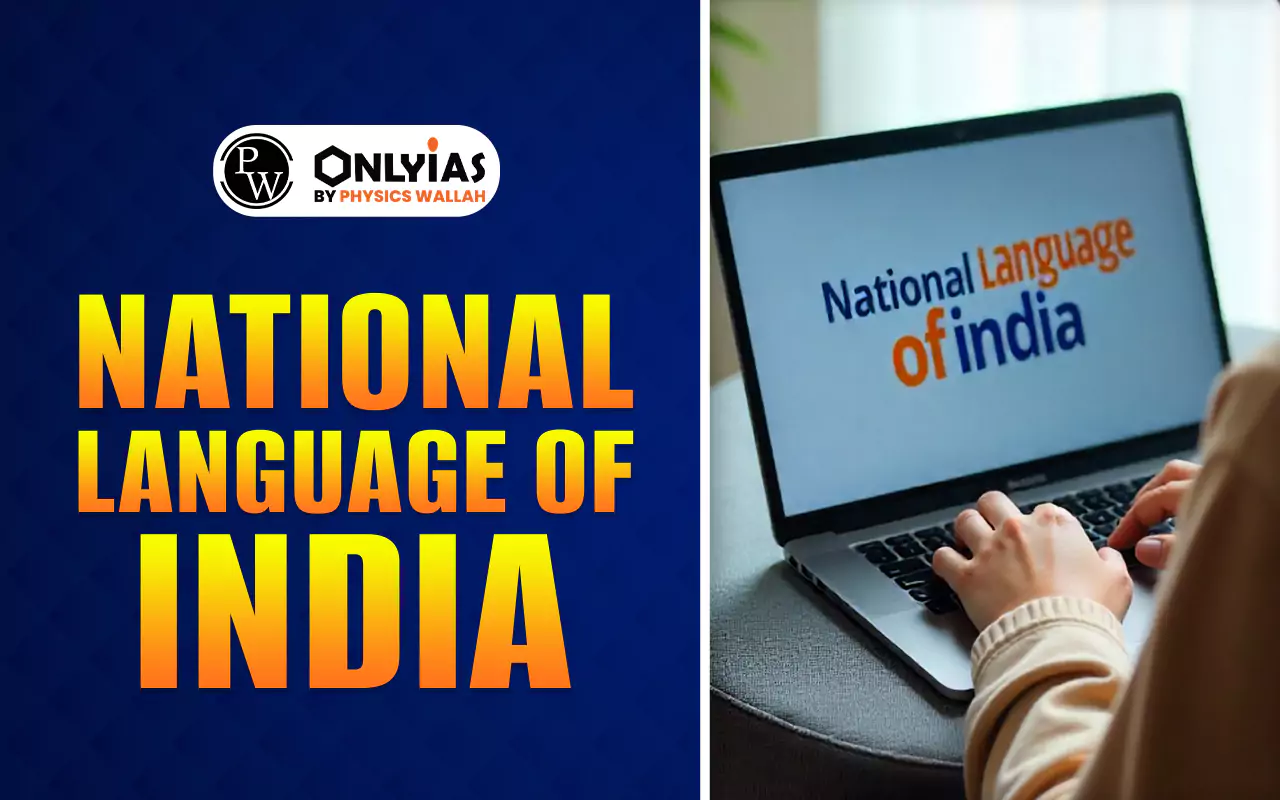National Language of India does not exist as per the Constitution due to the country’s vast linguistic diversity. Hindi, often mistaken as the national language, is actually one of the official languages alongside English. India officially recognizes 22 scheduled languages used for administration and cultural identity across different states.

National Language of India: India is a country known for its diversity in culture, religion, and language. With more than 1.4 billion people, India is home to hundreds of languages and dialects. This linguistic variety often raises one important question: What is the National Language of India? Many people assume Hindi is the national language, but this is not correct.
India does not have a national language. Instead, the Constitution of India provides for official languages, Schedule Languages, State-level official Language, and Special Directives. These are used for government, administration, and communication. Understanding the difference between a national language and an official language is important to know the constitutional position of languages in India.
The Constitution of India does not mention any national language. Although Hindi is widely spoken and used in government functions, it is not the national language of India. The term “national language” often creates confusion among people. Because it is commonly thought that every country must have a national language. In reality, India has no national language due to its linguistic diversity. Instead, it recognizes official languages for administrative purposes.
According to the Indian Constitution, there is no national language. The Constitution, however, identifies Hindi in Devanagari script as the official language of the Union under Article 343 (Part XVII). English is also allowed as an associate official language for government work. The Eighth Schedule of the Constitution lists 22 schedule languages, which are recognized for representation, literature, and communication within states.
Therefore, as per the Constitution, India has no national language, but it has 22 scheduled languages and two Union-level official languages: Hindi and English.
The Eighth Schedule of the Constitution contains a list of 22 recognized languages. It was originally limited to 14 languages but has expanded over time. The Eighth Schedule ensures that these languages are given representation in exams conducted by the Union Public Service Commission (UPSC), recognition in literature, and cultural importance.
The Eight Schedules of the Indian Constitution highlight the government’s commitment to linguistic diversity and equal recognition of regional languages.
The Constitution of India, under the Eighth Schedule, recognizes 22 languages as schedule languages. All of these 22 languages are mentioned below:
| Sl. No. | Language | State(s)/Region(s) Recognized |
| 1 | Assamese | Assam |
| 2 | Bengali | West Bengal, Tripura |
| 3 | Gujarati | Gujarat, Dadra & Nagar Haveli, Daman & Diu |
| 4 | Hindi | Uttar Pradesh, Bihar, Rajasthan, Madhya Pradesh, Chhattisgarh, Haryana, Himachal Pradesh, Jharkhand, Uttarakhand, Delhi (Union Territory) |
| 5 | Kannada | Karnataka |
| 6 | Kashmiri | Jammu & Kashmir |
| 7 | Konkani | Goa, Karnataka, Maharashtra |
| 8 | Malayalam | Kerala, Lakshadweep |
| 9 | Manipuri | Manipur |
| 10 | Marathi | Maharashtra, Goa |
| 11 | Nepali | Sikkim, Darjeeling (West Bengal) |
| 12 | Odia | Odisha |
| 13 | Punjabi | Punjab, Chandigarh |
| 14 | Sanskrit | Uttarakhand, Himachal Pradesh (recognized but rarely spoken) |
| 15 | Sindhi | Spread across India (not state-specific; major presence in Rajasthan, Gujarat, Maharashtra, Madhya Pradesh) |
| 16 | Tamil | Tamil Nadu, Puducherry, Andaman & Nicobar Islands |
| 17 | Telugu | Andhra Pradesh, Telangana, Puducherry (Yanam region) |
| 18 | Urdu | Jammu & Kashmir, Telangana, Uttar Pradesh, Bihar, West Bengal |
| 19 | Bodo | Assam (Bodoland region) |
| 20 | Santhali | Jharkhand, Odisha, West Bengal, Bihar |
| 21 | Maithili | Bihar, Jharkhand |
| 22 | Dogri | Jammu & Kashmir |
The terms National Language and Official Language are often confused in India. Both represent identity and governance, but they differ in meaning, status, and usage under the Constitution. Check the table below for more clearer understanding of the National Language vs the Official Language:
| Aspect | National Language | Official Language |
| Definition | Represents the identity and cultural heritage of a nation. | Language used by the government for administration, communication, and legal purposes. |
| Status in India | India does not have any national language. | Hindi (in Devanagari script) and English are official languages of the Union. |
| Constitutional Basis | No mention of a national language in the Constitution. | Defined under Article 343. |
| Purpose | Symbolic, unifying language for cultural or national identity. | Functional, used in governance, courts, and official documents. |
| Examples | Not applicable in India (since no national language exists). | Hindi, English, and 22 scheduled languages in respective states. |
Hindi is not the national language of India. It is the official language of the Union, but it does not hold the status of a national language. This is a common misconception among many people.
While Hindi is the most widely spoken language in India and is used in central government communication, it cannot be considered the national language, as the Constitution does not provide such a designation.
Ready to boost your UPSC 2026 preparation? Join PW’s UPSC online courses today!
India does not have any national language according to the Constitution.
India has 22 official languages listed in the Eighth Schedule of the Constitution.
India does not have a national language to respect its linguistic diversity and maintain unity among different regions.
No, India does not have a national language.
Hindi in Devanagari script is the official language of India, with English as an associate official language.

<div class="new-fform">
</div>